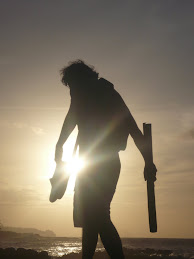- "One Love", Bob Marley and the Wailers
- "Aotearoa Aroha", by Diwata Tribe
- "Island Style", by John Cruz
The plan today was to catch another shuttle, Intercity Buslines, up the coast through beautiful Kaikoru to Picton, where we could jump on a ferry to cross the Cook Strait and land us in Wellington by nightfall.
ATTENTION ALL TRAVELERS: When catching the 7am Intercity Bus to Picton from Christchurch, note carefully that Intercity are the only buses which depart from their own terminal station on Worcester St, behind the chapel. Lesson learned.
So, it was back to the source of all knowledge – Google – to find us an alternative way to get to Wellington where Ola’s friends were expecting us in time to make a 1:30 tour of the city’s museum.
$400 in airfares, one hearty breakfast, and 3 hours later we are waiting for our bags at the Wellington Airport baggage claim with a friend of Ola’s who has offered to be our guide while we are in Wellington. This is no small feat, as this friend also happens to be the Director of Medical Research at Wellington University School of Medicine, and is a very busy and important man.
He whisks us away in his sporty little coupe and takes us to Te Papa Museum on the shore of Wellingon Harbour, where he is delivering an award to a colleague. She happens to be the Chief Curator of Te Papa, and takes us on a brief whirlwind tour of the Maori history exhibit, which is scheduled to be changed very soon. Ola is stricken by the beautiful and intricately carved Waka [war canoe] that is the length of the hall.
We learn about the Marae meeting house and Pataka food storehouses. We learn about the Treaty of Waitangi, and of the continuting struggles for land rights between Maori and Pakeha [non-Maori]. We learn about how the Maori population has been decimated since white man’s arrival: from 130,000 in the 1700s to about 40,000 today. The Hawaiian population has suffered similarly, although far more heavily: from 800,000 to about 40,000 today.
It is fasciating to compare notes between the two peoples, and how each dealt with, and continues to deal with adapting to modern-day society whilst honoring and preserving the rich culture of their ancestors. This will become a theme for the remainder of our trip.
After a cup of coffee with our guides, we are whisked away again, where we visit another friend, the Director of Maori Studies at Wellington University. This part of the city is a college town, with townhouses built into the hills and students lugging books and listening to iPods as they rush to their next class. We ask for permission to visit the Marae, which is hidden behind some buildings in a protective elbow carved into the hillside.
Led by our guide, we stand at the edge of grass before the Marae and wait to be invited in before crossing the threshold. We take our shoes off and are led to seats just inside the entrance, where we stand facing a small group of Maori students who survey us with a fierce curiosity. We are motioned to sit as he begins to welcome and introduce us to his family in his native Tongue.
The students then launch into a beautiful harmony, a welcoming song that gives us goosebumps, and recounts the story of the sacrifices made to build this Marae. The Maori language is beautifully musical, similar to Hawaiian, with a more war-like quality to it.
Now it is our turn: we are introduced as friends, and a little about who we are is shared, before it is sugested that Ola may dance a hula as our offering. There is enough similarity between Maori and Hawaiian language that Ola understands this part of his speech, and she is visibly nervous. Her lone voice quivering, she dances and sings beautifully for us, her courage and grace moving everyone in the room.
The ancestors of the many different tribes represented here glare down upon us from the walls as we are welcomed and shown around, learning about the different tribal ancestors represented in each beautiful carving, and the meanings of each intricately weaved pattern. The mana is strong here, vibrant and pulsing with its own life force. Our host explains that this is very much a living marae, with regular events scheduled and familes coming to sleep under the watch of their ancestors.
I feel so blessed to be invited into the marae as a 'Brother from Hawaii' to learn about Maori culture . You see, although I am third generation born and raised in Hawaii, there is no Native Hawaiian blood flowing throw my veins: my family heritage is Irish-Scottish-Filipino. Though the Hawaiian culture is the one I feel closest to, I have always felt an outsider because of my lack of Hawaiian cultural knowledge. It is truly humbling and an honor to be so warmly welcomed.
Although we are invited to take photos, the experience of sharing cultures so intimately is so profound that it doesn’t feel right to take out the cameras and start snapping away. The images and music and emotions of that afternoon, however, will remain etched into my memory banks.
WELLINGTON HARBOUR
Afterwards we are invited to have a cup of tea in the student house, where we watch the Maori-language news broadcast, then are taken to the staff lounge to enjoy a couple Friday night drinks. As we relax on a balcony with our new friends, sipping on a cold brew and watching the sun set over Wellington Harbour, I notice that my cheeks are actually sore from the smile that has been on my face since our arrival in Wellington.
Today's experience epitomizes what I enjoy most about travel: people, humanity, connection.




No comments:
Post a Comment